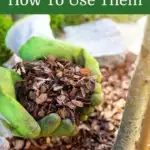
Mulches are layers of material placed over growing areas or between plants to cover areas of bare soil.
There are two main types of mulch – mulch made from organic materials, and mulch made from non-organic, non-biodegradable materials.
Within the first category, there are organic materials laid as mulches to decompose on the soil surface, and living mulches – living plants that are sown as ground cover or as green manures.
In this article, we will explore the different types of mulch. First, we’ll cover the organic mulches, which have a huge range of benefits. Then, towards the end of the article, we’ll look at some of the non-organic materials you might choose.
It can be difficult to work out which mulch to choose in different areas, and for different purposes. But read on and you will be introduced to a wide range of options. And we’ll discuss the reasons why we might choose to use each type, and where they could be used.
Why Use a Mulch in Your Garden?
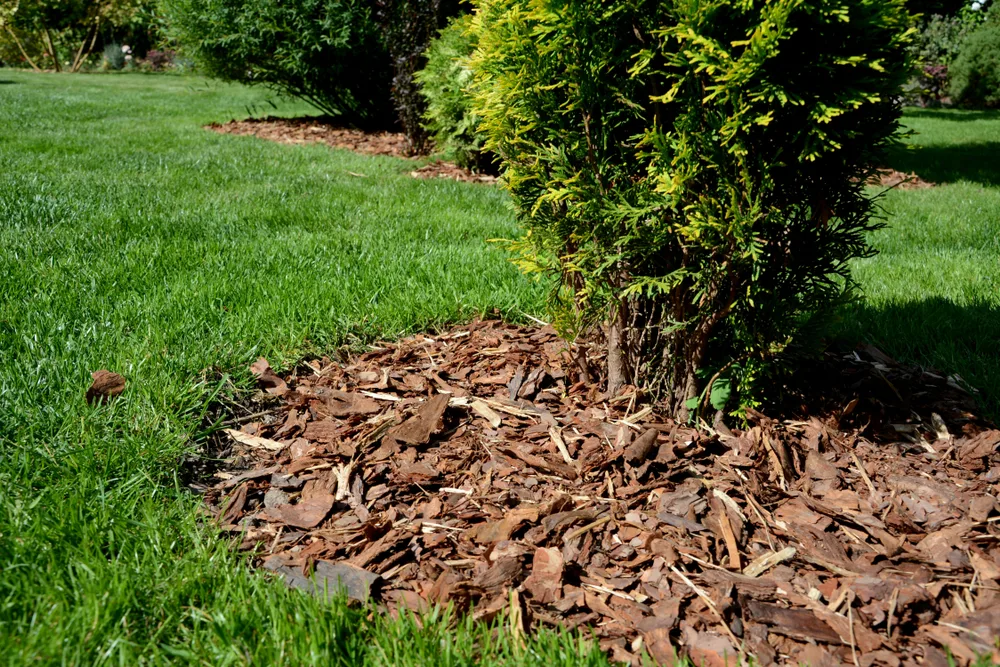
The process of choosing a mulch to use in your garden begins with an analysis of why we use mulches in the first place.
We can use mulches to:
- Add nutrients and build soil fertility.
- Improve the structure and capacity of the soil.
- Protect bare soil from nutrient loss and erosion.
- Retain moisture in the soil and help reduce water use.
- Suppress weeds and reduce weed growth.
Not all mulches provide all of the above. Non organic mulches will not add nutrients or improve soil structure, but they can help in other ways mentioned above.
Organic mulches can also promote healthy soil organism populations and provide a habitat for bugs, beetles and other ground dwelling wildlife.
Organic Mulches
First of all, let’s begin by taking a look at some general purpose organic mulches that can be beneficial when added pretty much anywhere in your garden.
These mulches contain a wide range of beneficial nutrients, and are forms of brown organic matter that will improve the structure and characteristics of your soil. These options are great for adding around edible crops and other plants in your garden.
1. Compost
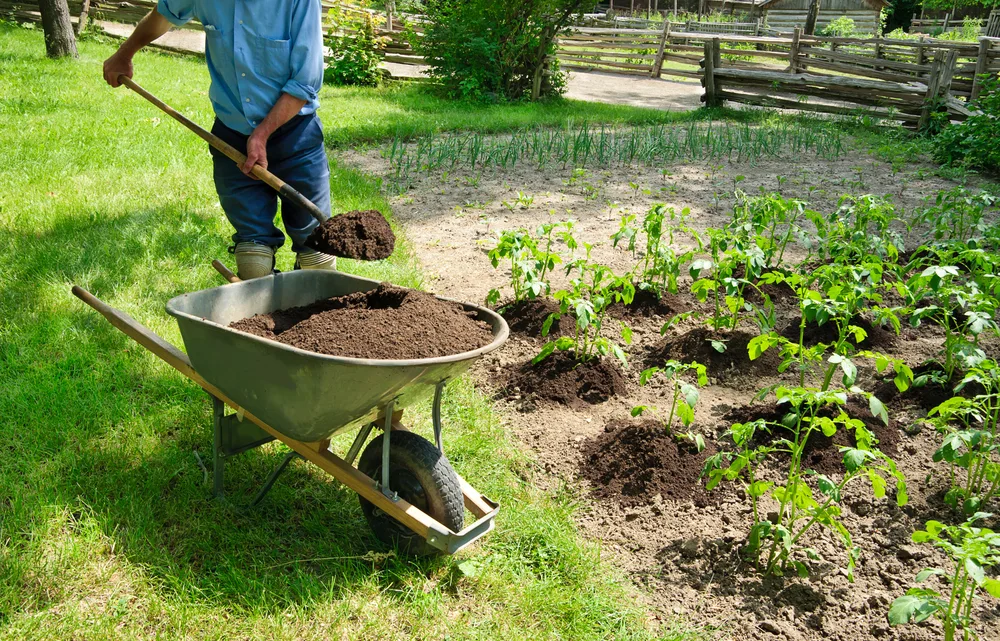
If you do not already make your own compost at home, it should be a high priority on your list.
Composting is not rocket science, but there are things that can go wrong, such as adding the wrong materials. If you are new to composting, check out my article on common composting mistakes to make sure you care not making any of them.
All composts can be great to use as mulch. But the worm castings from a vermicomposting system mean that it can be particularly good as a soil amending mulch. Bokashi ferments are great to feed the worms in such a system.
2. Well-Rotted Manure
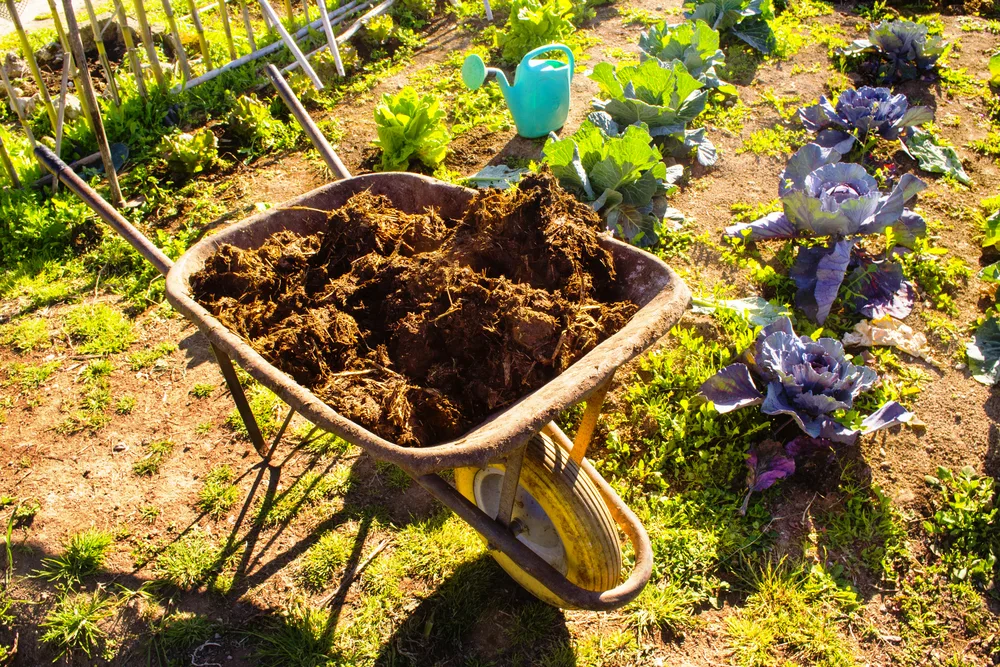
Well rotted manure can also be used as a mulch, but for most types of manure, it is important to compost/age them first.
Different manures have different benefits, and different nutrient profiles. To find out more about using chicken manure in your garden, for example, check out this article.
You can also use plenty of other types of manure in your garden, including:
- Manure from other poultry and birds.
- Cattle manure.
- Horse manure.
- Sheep/ goat manure.
- Alpaca/ llama manure.
- Rabbit manure (or the droppings from other small herbivorous pets, such as guinea pigs, gerbils or hamsters, for example).
- Manure from plant-eating exotic animals like elephants, rhinos etc.. (which you may be able to collect from a local zoo).
With certain precautions and caveats, it may even be possible to use humanure. Turning human waste into compost is possible, as this article explains.
3. Leaf Mold
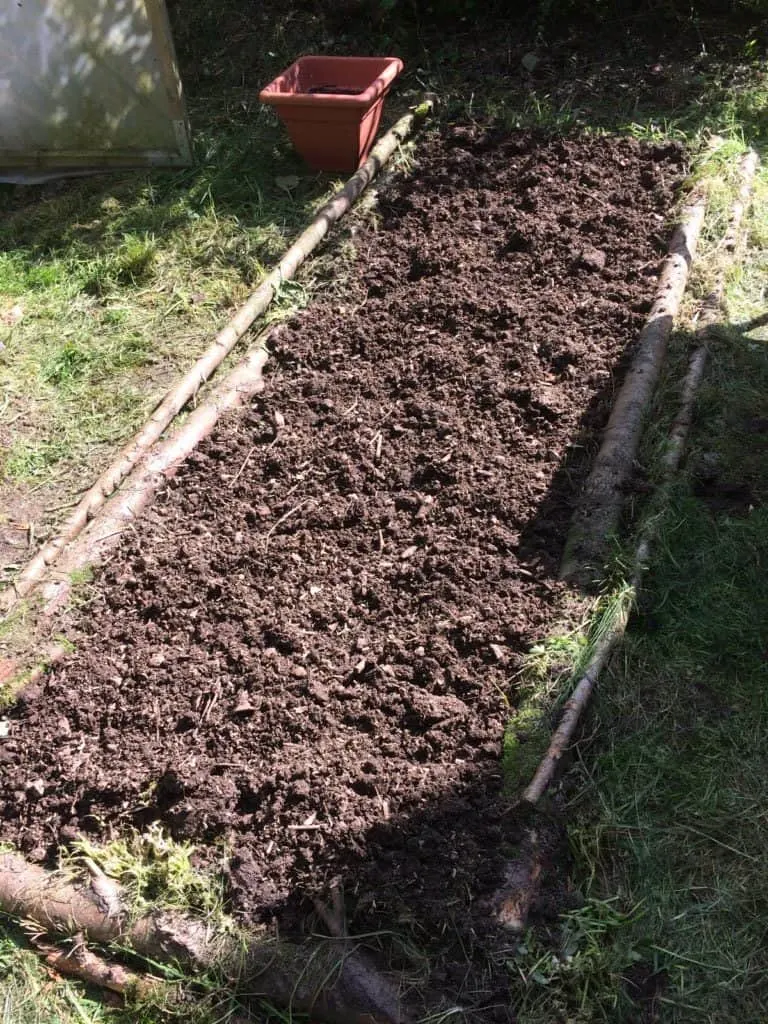
Another extremely valuable brown organic matter mulch for your garden is leaf mold – the perfect way to use fall leaves from your property.
Leaf mold is basically dried leaves that have broken down to make a light and crumbly brown material that you can use on garden beds.
As you will discover below, fall leaves can also be used as a mulch as is. But turning them into leaf mold means you can use them more easily in your pots and containers, amongst your fruits and vegetables, and in a range of other settings.
Both partially decomposed leaf mold, and the finished product can very useful as general purpose mulch.
Carbon-Rich Organic Mulches
Carbon rich organic mulches add nutrients, but are particularly beneficial for increasing soil carbon, and improving the structure of the soil. A thick layer of one of the mulches mentioned below can also help keep soil and roots from freezing over the winter months.
4. Fall Leaves
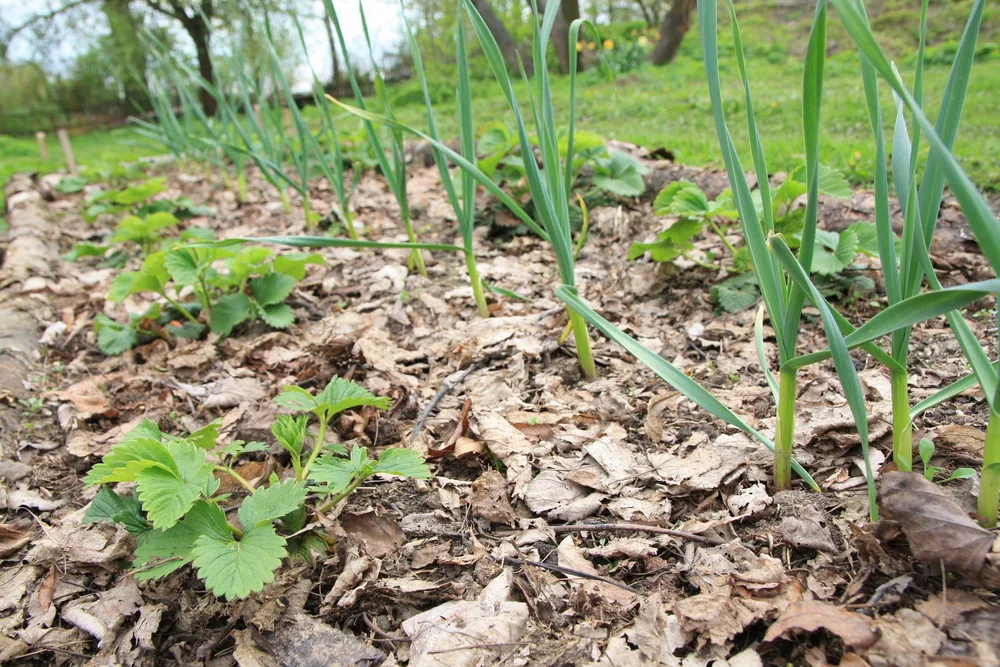
Gardeners are often too quick to tidy up in their gardens. Fall leaves can often be left to sit where they lie in beds and borders.
Under trees and shrubs, fall leaves can serve as a natural mulch, just as they do on a woodland or forest floor. Over time, they break down to create a rich humus and replenish fertility, returning nutrients to the system.
You can also gather fall leaves to use directly as a mulch elsewhere. For example, I often gather fall leaves to lay as a thick mulch over my fall planted garlic. You can also use them to provide some protection for other overwintering plants.
5. Wood Chip/ Bark/ Wood Shavings
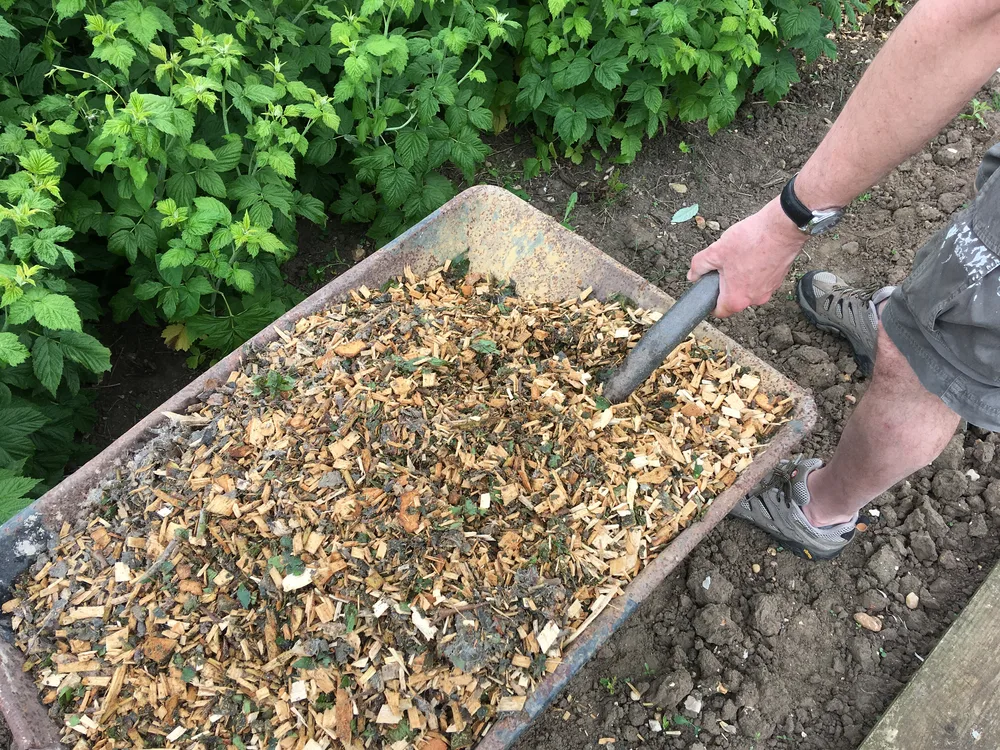
Wood chip and other woody materials can also be extremely useful as mulch. But you do need to be careful where you use it. It is great around fruit trees, mature shrubs and woody perennials, but is not necessarily always such a good idea in a vegetable garden.
For more information on how and where wood chip should be used as mulch, check out my article on uses for wood chip in the garden.
6. Straw
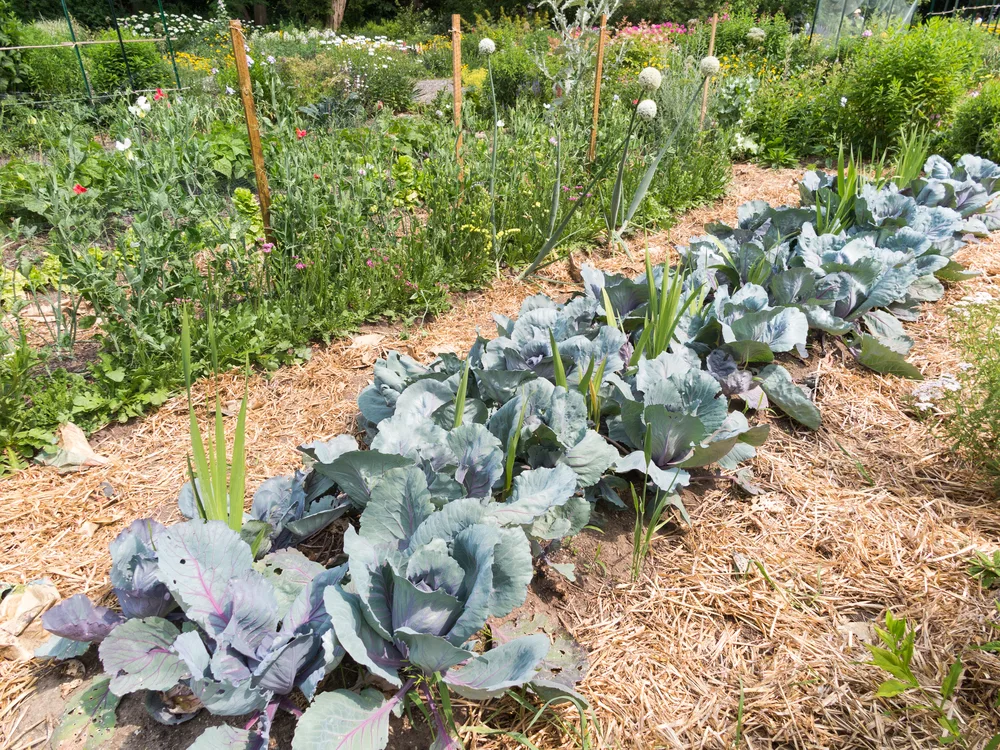
Straw is another carbon rich material commonly used as mulch. First off, note that we are taking about straw not hay. Hay can contain a lot of weed seeds that can cause a problem if you use it as a mulch in a cultivated vegetable plot. It also has different characteristics and will tend to rot more quickly.
Straw, like other carbon rich materials, can help build the soil as it decomposes. But as it lies in place as a mulch, it is particularly beneficial for retaining moisture in summer, and keeping shallow roots safe from winter cold.
Straw is also useful because it is very good for keeping fruits up off the soil. It is often used as a mulch around strawberries, or around cucurbits, for this reason.
7. Pine Needles
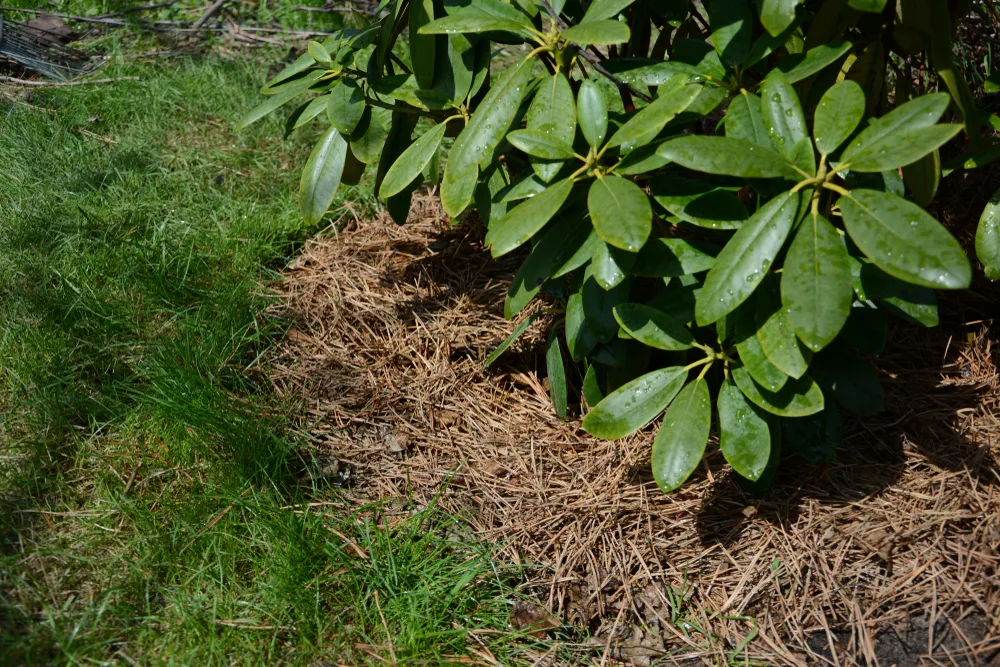
One other bulky, carbon rich material often used as a mulch is pine needles. This can be a good choice in gardens where there is always an abundant supply. If you have large pine trees or other conifers on your property, it can make sense to make use of the needles they drop. Sometimes called pine straw, this can be another useful mulch for certain areas.
Pine needles make soil more acidic when incorporated into the soil – but only very gently and slowly. This is not usually an issue when a layer is added as a mulch, as the material becomes less acidifying as it breaks down.
If you have a number of pine trees on your property or nearby, you can also use the pine cones as a mulch. These take a long time to break down and you may find a more practical way to put to good use, but it is another option.
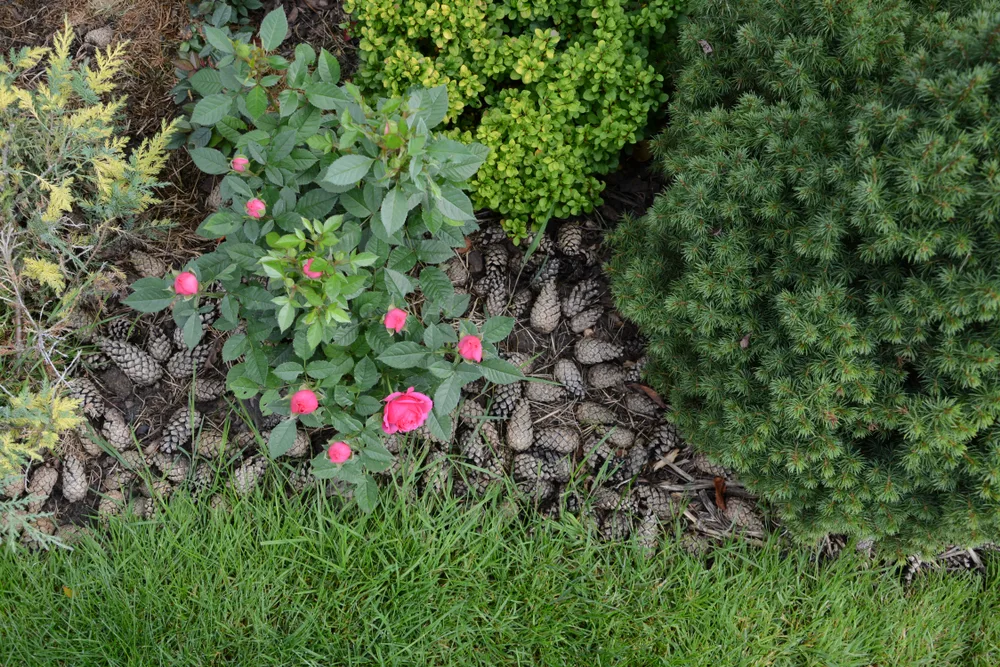
If you find that you do not have ready access to any of the above, there are mulches that you can buy that will serve a similar purpose.
Coconut coir is one example. Coconut coir matting can also be used around newly planted trees or shrubs to suppress weed growth and reduce initial competition around the base of the trunk.
But where possible, it is always best to use mulches from your own garden, or from as close to home as possible.
Nitrogen-Rich Organic Mulches
Another type of organic mulch is chosen for its high nitrogen content. Nitrogen rich mulches break down much more quickly than the carbon rich materials mentioned above, yet are still considered to be a form of slow-release fertilizer.
These mulches are best used around leafy plants that require a boost of this essential plant nutrient. But it is important to use caution, as adding too much nitrogen can harm plants, and may also encourage certain plants to put on leafy growth at the expense of flowers and fruits.
It is often a good idea to use them in conjunction with the carbon rich mulches mentioned above in sheet mulching. Together, the nitrogen rich and carbon rich materials will fulfil a range of functions and will work together in much the same way that they do in a composting system.
8. Green, Leafy Material
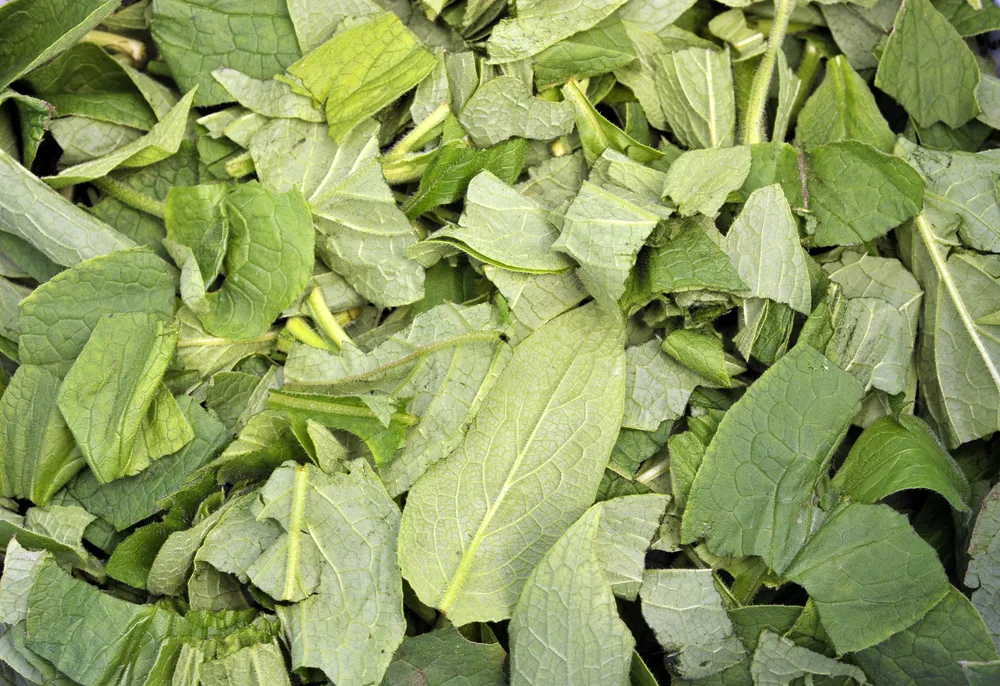
Whenever you pull crops or weeds (that are not invasive and have not gone to seed) from your garden, consider simply chopping and dropping some of that material as a mulch.
Any green leafy material can be used in this way, and all will return nitrogen to the system to some degree. (Along with other nutrients, which of course vary from plant to plant.)
Nitrogen fixing plants are particularly high in nitrogen, of course, and so chopping and dropping these around other plants can be a great way to replenish nitrogen in the system.
For example, I sometimes use green leaves pruned from deciduous goumi (Elaeagnus ssp.) in my forest garden (that need to be kept in check so they don’t outgrow their locations) as a mulch around brassicas and other nitrogen-hungry plants, as well as letting the rest fall to feed the forest garden system.
Of course, peas, beans and other leguminous plants are also excellent for chopping and dropping around other plants in an annual garden.
9. Grass Clippings
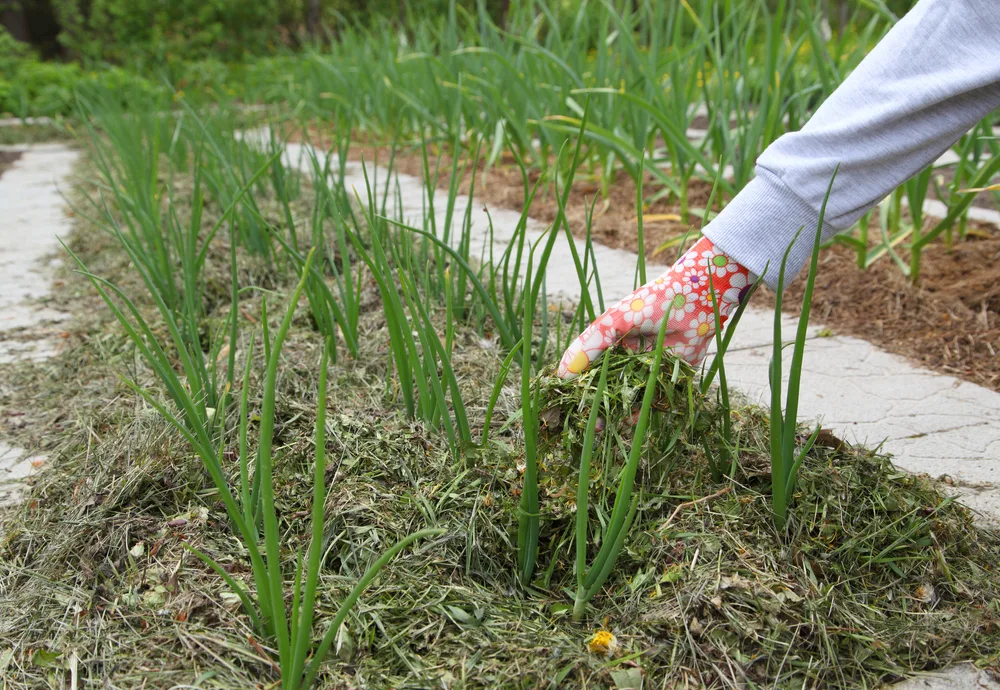
Glass clippings are one source of nitrogen-rich plant material that gardeners often have access to in abundance.
Glass clippings can be used as a mulch around brassica and other nitrogen-hungry plants, or added alongside a carbon rich material for a more general purpose sheet mulch solution.
Be careful where you use it alone – however. Certain plants may be burned by excessive nitrogen addition. And don’t lay grass too thickly or it may begin to decompose anaerobically. Warning, it it does, it really smells dreadful.
If you are using grass clippings as mulch, look out for weed seeds and invasive weeds, and of course, make sure that you are not using grass that has been exposed to pesticides or herbicides around your edible plants.
10. Coffee Grounds
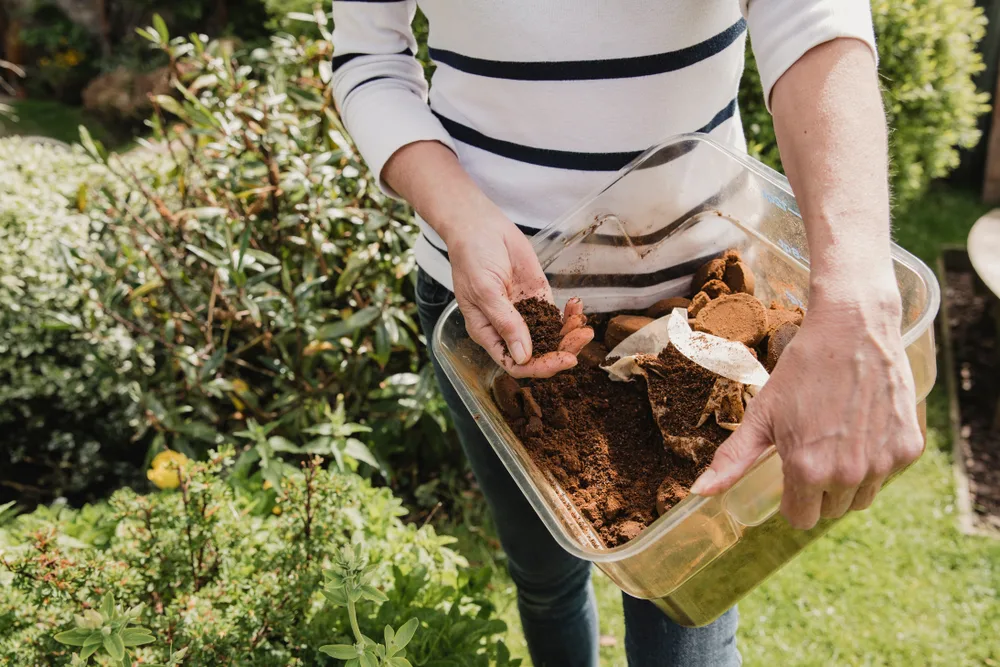
Coffee grounds are another nitrogen rich material often used as mulch. However, using then alone is not something that we would recommend.
It is not a good idea to use coffee grounds as a mulch on their own. They compact too easily, reducing air flow to the soil and preventing water from reaching plant roots where it is needed.
There is also some debate as to whether coffee grounds are beneficial or harmful to plants.
If you do decide to mulch certain plants with coffee grounds, this can help boost the fertility of the soil for nitrogen-hungry plants. But make sure you mix the coffee grounds well with other organic materials. Better yet, compost them first and then use the compost as mulch material.
Other Mulch For Micro-Nutrients
11. Seaweed
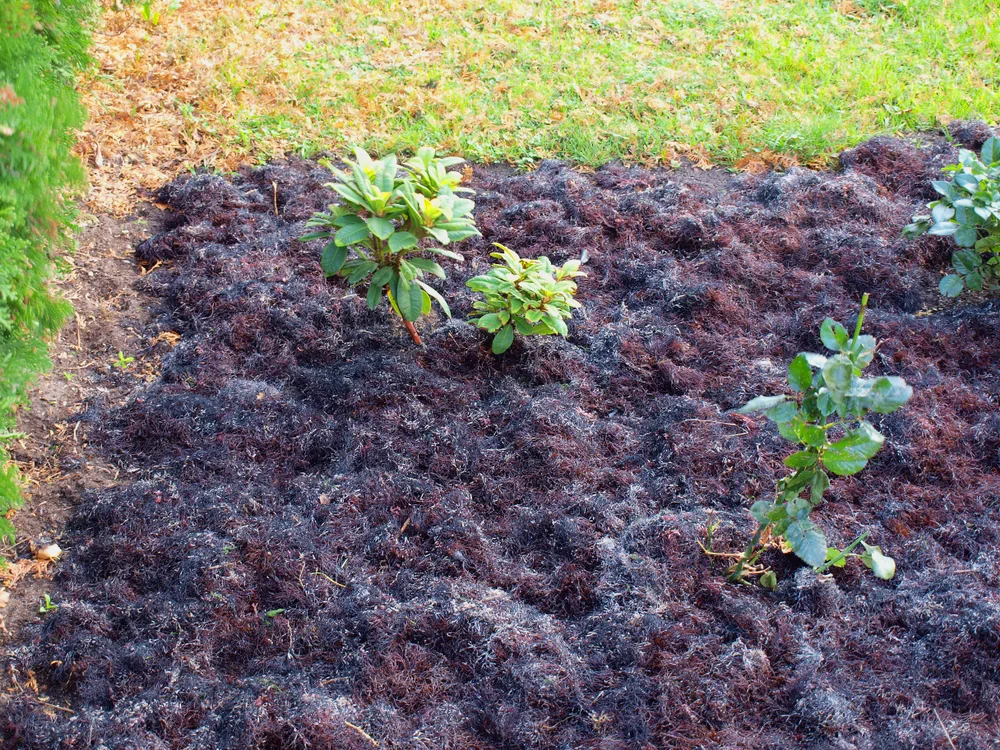
One other mulch to consider, especially if you live close to the coast, is seaweed.
Seaweed is an excellent source of nutrition for plants as well as people. It is a broad spectrum fertiliser that can promote plant growth. It is a good source of potassium and magnesium. And also trace elements (nutrients that plants require only in small quantities) including iron, manganese, zinc, copper and boron.
To find out why seaweed is an excellent mulch for fruit and vegetable plots, as well as other areas, and to discover its many other uses, check out this article.
Living Mulch
12. Ground Covers and Green Manures
So far, we’ve explored the brown and green organic matter that you can use as mulch in your garden, but one other area to explore when choosing a mulch for your growing areas is living mulch.
The idea of a living mulch is that rather than chopping and dropping plant matter, or spreading dead or decomposed plant matter between plants, you use living plants to cover the soil instead.
A living mulch can be used to create ground cover between plants, or can cover bare soil during the winter, or during gaps in a crop rotation scheme.
Living mulches can have the same benefits as the other mulches described above but also go one step further. While in active growth, they may also attract pollinators or other beneficial wildlife to your garden.
Using living mulches between other crops is a kind of companion planting. As with any other companion planting, it is important to consider the needs and characteristics of the neighbors.
Remember, living mulches can increase competition for water and nutrients, but choosing the right options can mean that the benefits outweigh the negatives. And that yield and positive outcomes increase over all.
Living mulches can usefully be divided into three categories:
Annual Living Mulches
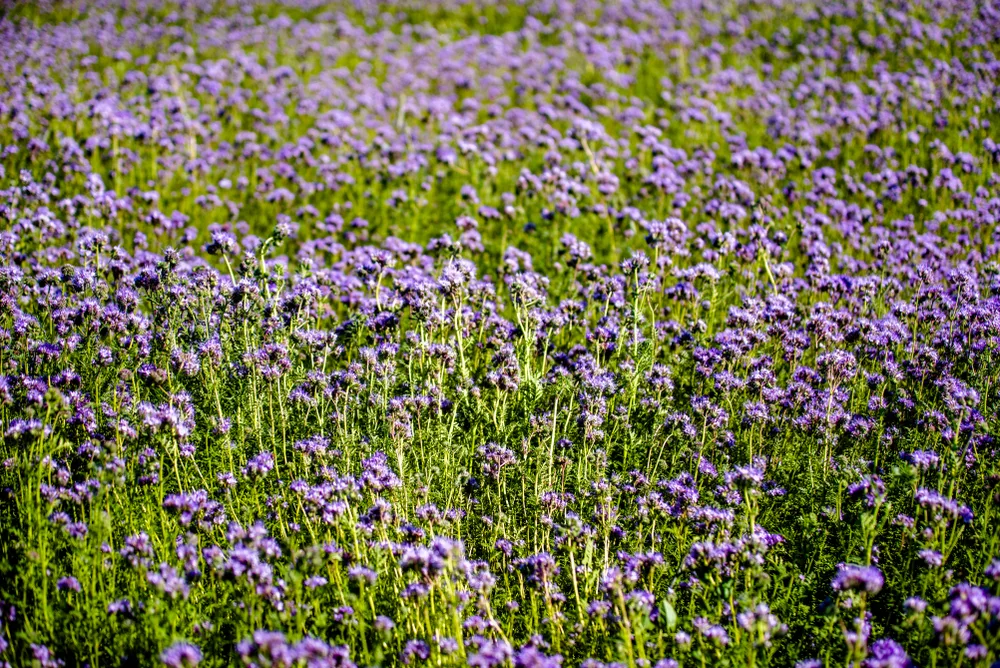
Annual living mulches are usually sown in the spring. In cold climates, they are naturally killed off when temperatures fall below freezing over the winter months. However, they may also be chopped and dropped at an earlier stage depending on the requirements of crop rotation.
- Alfalfa
- Crimson clover
- Berseem clover
- Subterean clover
- Snail medick
- Buckwheat
- Phacelia
- Chickweed
Biennial Living Mulch
Also usually sown in spring, a biennial living mulch will grow over its first season, overwinter, then flower, set seed and die the following year.
- Yellow sweet clover
Perennial Living Mulches
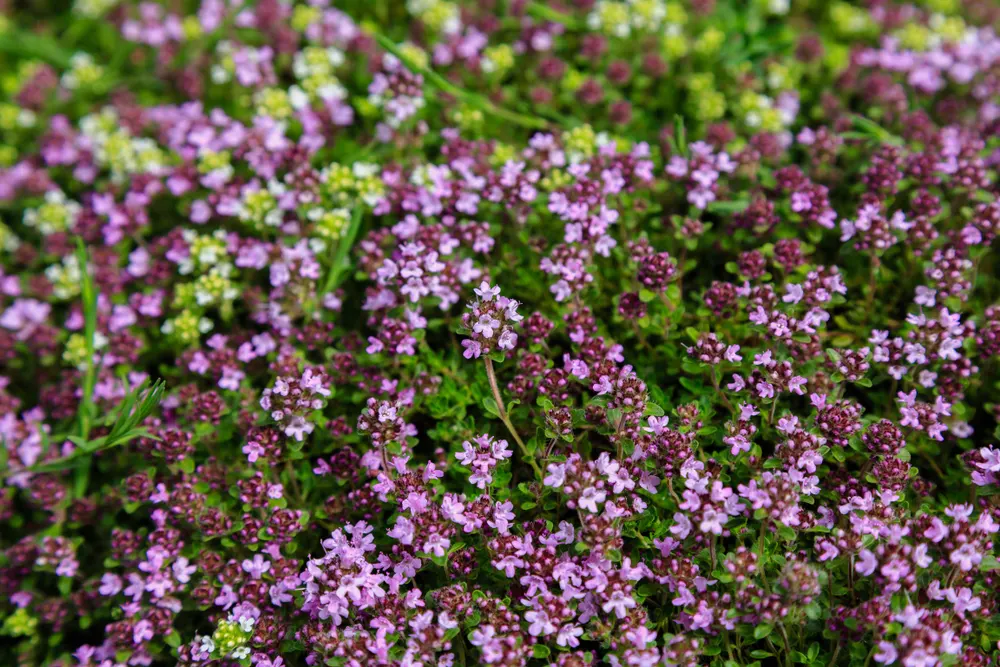
Perennial living mulches can be sown in spring, but are frequently sown in late summer or early fall. They will remain in place, and can often protect the soil for many years.
- White clover
- Vetch
- Winter rye
- Thyme
- Mint
Related Reading: Annuals, Biennials & Perennials Explained
Non-Organic Mulches/ Ground Covers
Organic or living mulches are generally the best options for most situations and circumstances, but there may be times when you want to cover an area with non-organic mulches.
Non organic mulches won’t add much in the way of nutrients, nor will they be beneficial for biodiversity, but they can help in dealing with problematic weeds, retaining soil moisture and protecting the soil. Some may aid in drainage, while others may be used for purely decorative reasons.
Here are a few non-organic mulches or ground covers that might be used:
13. Landscaping Fabric
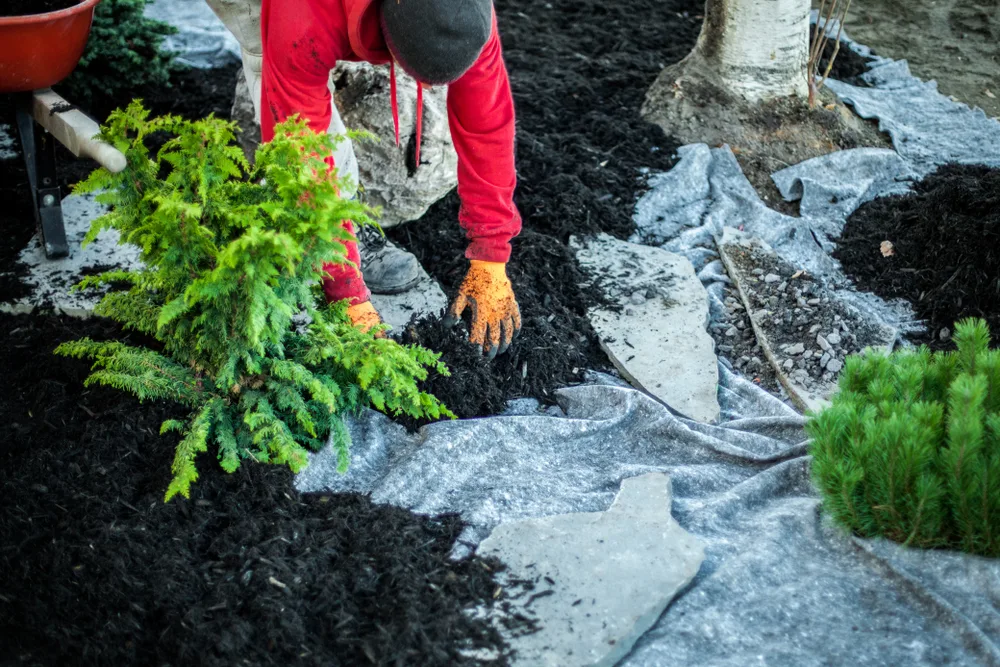
Landscaping fabric is generally plastic, and not the most environmentally friendly choice. However, it can be beneficial where weeds are a major problem, especially when soil cover is needed on a larger scale.
14. Cardboard
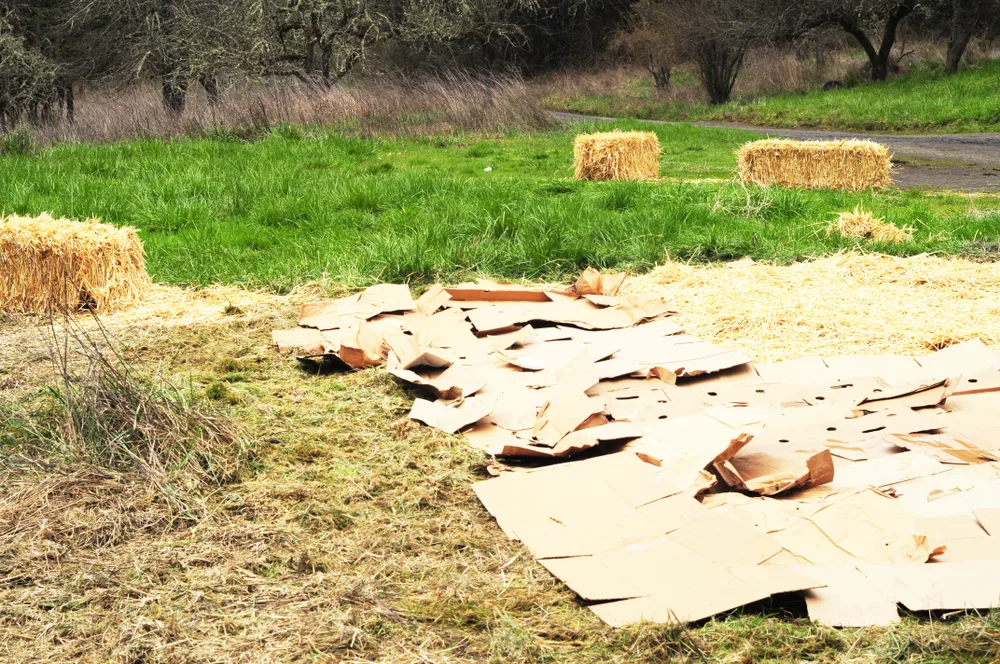
This is a cheaper and more eco-friendly alternative to plastic membrane type soil covers. Cardboard will obviously break down over time, but it can last long enough to suppress weeds or grass growth and allow you to establish a new garden area.
Save your cardboard boxes! There are many ways to use cardboard in the garden.
15. Slate
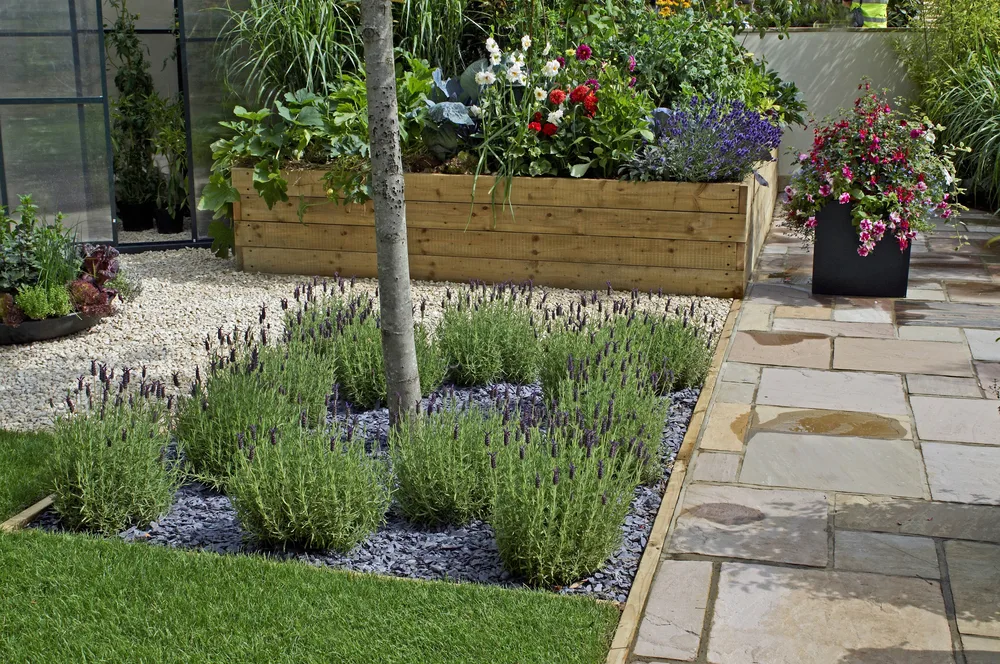
These mulches are often used for decorative reasons, or to keep a garden looking neat. Slate mulches will help in preventing water from pooling around the base of plants that don’t like wet feet, and can also help in retaining heat in a growing area.
16. Gravel
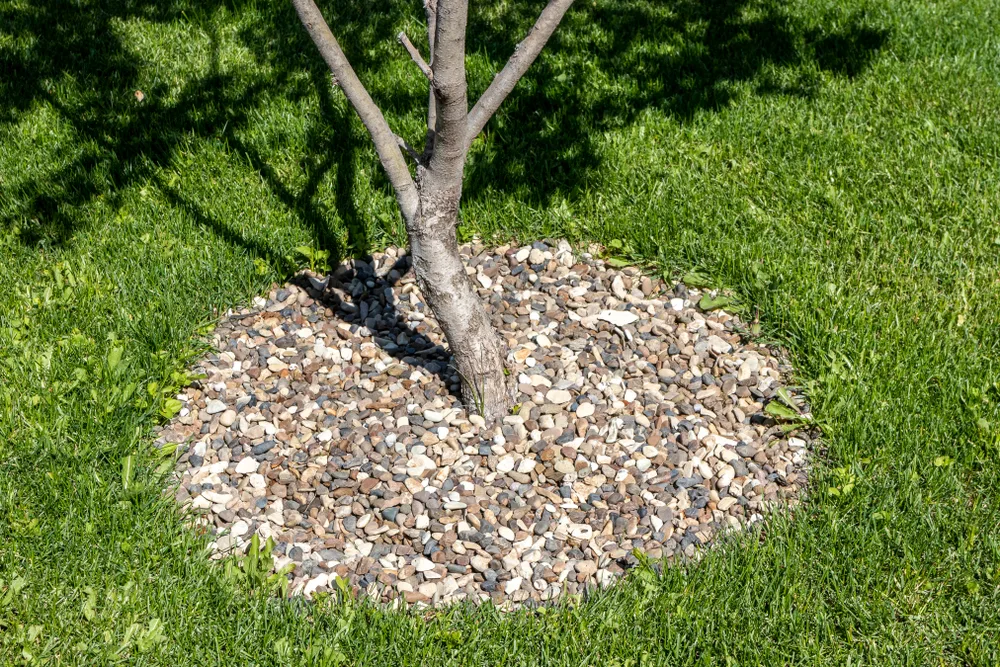
Gravel mulches come in a wide range of grades, textures and colours, so are often used decoratively in garden design. Like slate, they can also improve drainage, and stop soil from splashing up onto plants. Succulents and other rock garden plants will benefit from a mulch of this type.
17. Pebbles
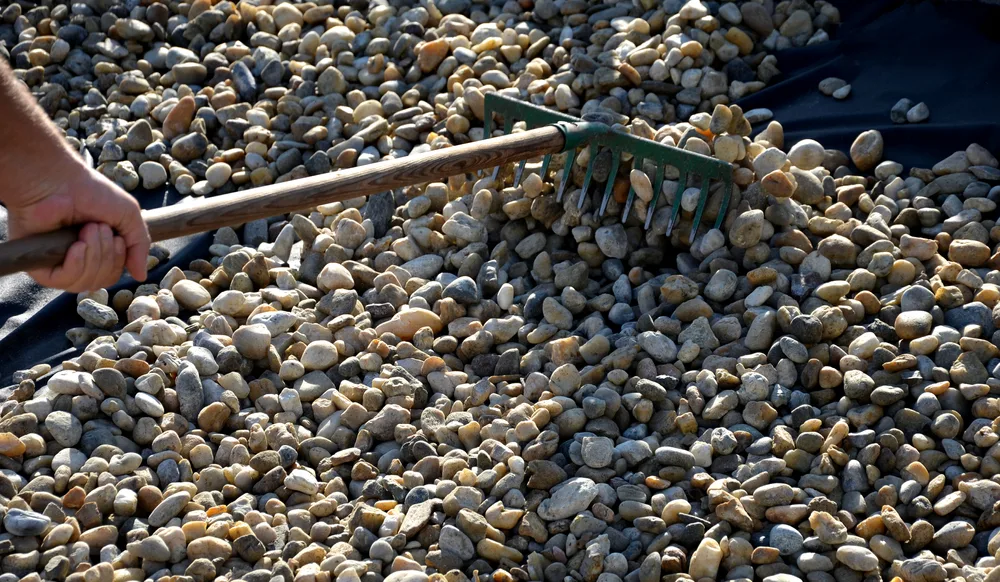
If you like a more organic look, natural pebbles are an alternative to aggregate and gravels. Again, they can be used to create a range of different decorative effects, as well as serving the same functions as the above.
18. Sea Shells
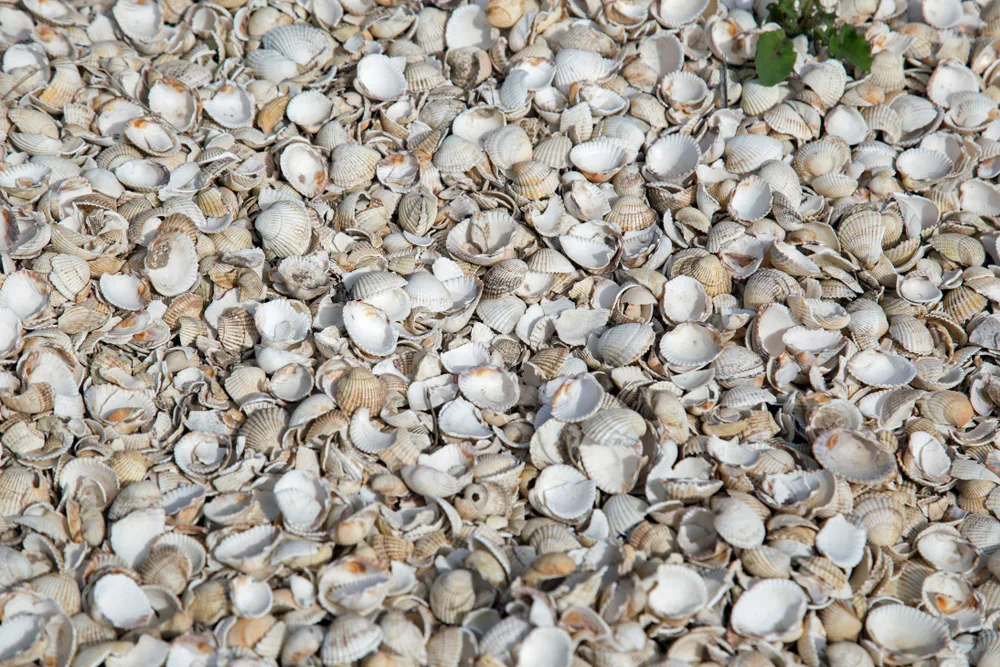
Another organic solution for garden design is to use sea shells as mulch. Sea shells also protect the soil surface and yet are most frequently used to give a seaside feel in a garden.
19. Tumbled Glass
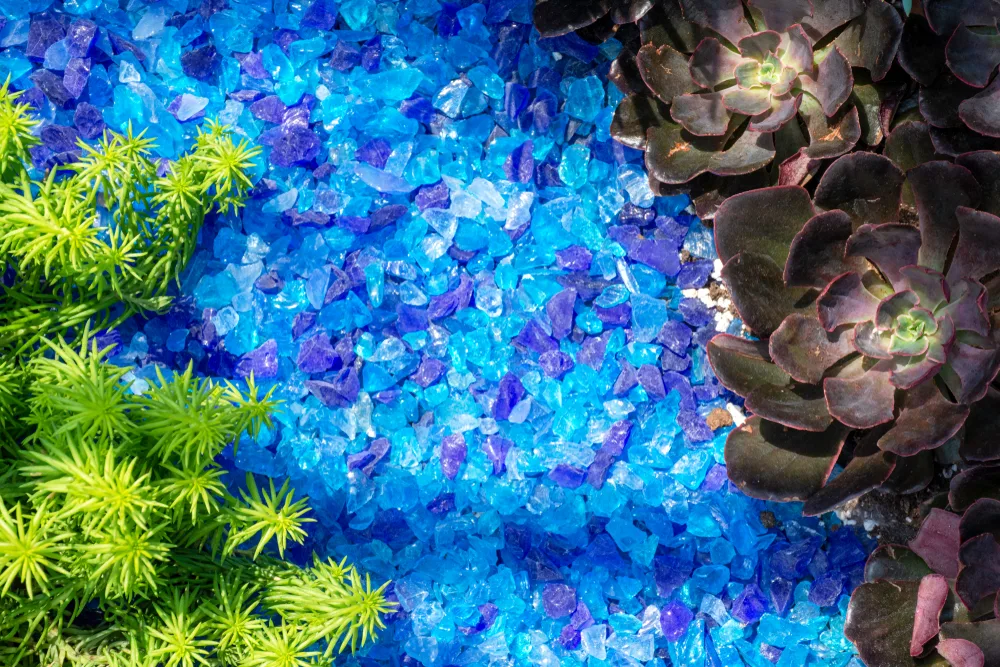
Another mulch material used for decorative effect is tumbled glass. Tumbled glass or sea glass in a range of hues can add colour and interest to containers, beds or borders. And while an organic mulch is better, decorative mulches will still help to protect the soil and keep water and nutrients where they need to be.

Get the famous Rural Sprout newsletter delivered to your inbox.
Including Sunday musings from our editor, Tracey, as well as “What’s Up Wednesday” our roundup of what’s in season and new article updates and alerts.


